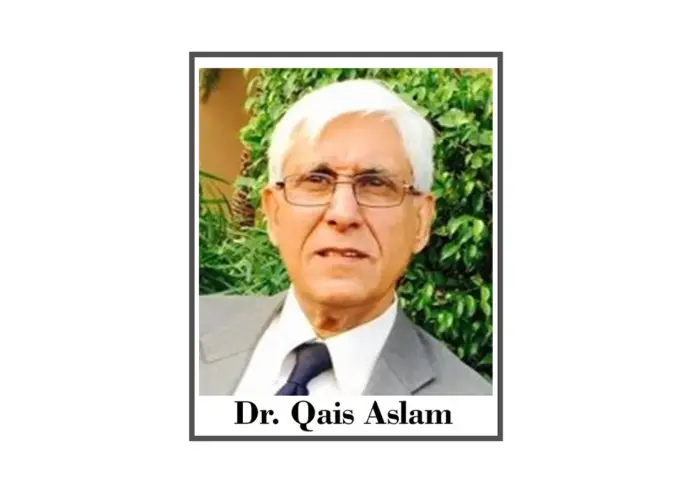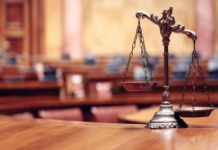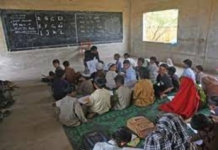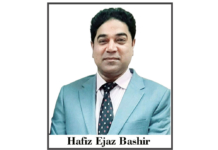Elections in Pakistan were held in spite of many sceptical denials. Although they were not absolutely ‘fair and free’, but the public, especially the youth participated wholeheartedly.
The PTI with its many leaders behind the bars and underground claimed to have won 50 seats more than the 90 seats announced by the official results show but got an absolute majority in KPK and formed the provincial government there. PTI led winners in the National Assembly jointed the Suni Itahad but were still deprived of their share of special seats and therefore are sitting in the opposition.
Most of religious parties including the JI and JUI-F failed to get more than a couple of seats etc.
The PPP came up as the third largest party in the National Assembly and a majority party in Sindh. Therefore PPP has formed a government in Sindh, their traditional stronghold and has with a coalition with arch rivals the PML(N) have made their leader Asif Ali Zardari the President of Pakistan.
The PML(N) although has become the largest party in the National Assembly but could not muster enough seats to form a government alone even with minimum majority, therefore had to form a PDM2 government with help of PPP and MQM that has won 17 seats from Karachi. But the irony is that the PML(N) could not get it’s leader Nawaz Sharif to become the Prime Minister the fourth time and had to contend with his brother to be PM the second time around. Nawaz Sharif daughter Maryam Nawaz has become Chief Minister of The Punjab and both PPP and PML(N) have a coalition government in Baluchistan.
The Senate elections are going to give a seat each to interim PM Kakar and Punjab CM Naqvi as members of PML(N), therefore a clear indication of their roles in election manipulation in favour of PML(N).
There is a government of PMLN in Punjab, of PTI in KPK and a government of PPP in Sindh and PDM2 in the canter with President from PPP, Isaq Dar is the Foreign Minister and an imported Banker as the technocrat Finance Minster that has successfully concluded the last trench of US $ 1.1 billion and a promise of another medium term agreement that would promise structural reforms in the economy and the FBR as well as free float foreign currency against the Pak Rupee. This would also mean rising energy costs and increased burden of taxation on the masses, especially the middle classes of the country.
The economic and governance performance of each province would also show the seriousness of each political party towards to people and the economy as well as their way of governance.
Factor of production -Labour. In a nation where 26.6 million children are out of school, those that go to madrassa are not taught viable skills and those that go to government schools are also not better off and every year only less that 2 million children pass the tenth grade Metric exam. A nation where labour productivity is the least in the region and yearly more than a million skilled people, especially the youth and the moneyed classes are leaving the country for ‘greener’ pastures what holds for future economic growth is hard to predict.
Second Factor of production – Land.In a nation where land productivity is the lowest in the region, where almost 44% of landholdings are small unsustainable farms, where another 44% landholdings are Big landlords using primitive agriculture techniques tilling the farms through poor sharecroppers, where there is scarcity of water, scarcity of good seed and expensive farm inputs that are mostly imported, where capitalist progressive farmers own only 16% of land holding and use modern techniques of farming cash crops that contribute 3% to GDP and food crops contribute 5% to GDP and whole of agriculture including horticulture, meat and dairy farming total of only 23% to GDP the question of feeding 250 million population becomes a great challenge for the near future. This question also concerns with earning foreign exchange through exports and saving foreign exchange through import substitution. One should also remember that our forests and fish stocks are also dwindling that contribute 2% each to our GDP. The question of adverse impact of Climate Change and melting of glaciers printing deviating flooding can also not be ignored by the government when by 2023 the 17 SDGs have also to be abided by.
Third factor of production – capital – can not be ignored when Pakistan is under burden of internal and external debt and can not meet its fiscal and monetary requirements through its narrowing tax base and it’s inability to rope in the rich and powerful who through there immense political and economic power take the cream of economic advantages of government policy but are usually not part of the tax net and force the issue of bad governance at all levels of the government. The country, due to lack of R&D lacks basic 21 century technology resources and innovation skills.
The fourth factor of production Entrepreneurship and Management that allows the use of right person for the right job and financial skills to calculate costs and benefits for now and the future are also generally missing. During the last few years any a middle level business sold their assets and transferred their funds and business to the Gulf or Europe etc. at safe heavens leaving the country void of many a managers and mid level managers.
Unemployment is at 12% and inflation above 34.4% with policy interest rates at 22%. How does one expect new business to thrive. 40.% of the able bodied population is under extreme poverty, another 49% living above poverty line but poor, further shrinking the demand side. Population growth rate is almost 3% when economic growth rate is 0.5% .
The inflationary shock is more of cost push than demand pull and includes the cost of government inefficiencies, the cost of market inefficiency, rising energy costs, rising dollar costs on imports etc as well as decreasing marginal productivity of labour and management skills. Cartelization of markets and serious issues of governance are also adding to the misery of both the demand side And incapability of the supply side, especially our exports. Serious thought has to be given on both government and market reforms
The role of Government in the economy as the protector of the Rights of People has to come from the Budgetary and Institutional reforms. Therefore some Budgetary suggestions for the New Government of Pakistan small but efficient government is needed with both financial and administrative reforms in place
- All Public sector enterprises that are going in a loss have to be either restructured or sold
- Provincial and Federal departments ding similar tasks should be merged or restructured
- Debt management is necessary for reduction of Budgetary Spending, especially circular debt and internal debt which amounts to almost 52% of current expenditure
- Defence expenditure must be curtailed to a limit
- Pensions reforms must be undertaken to reduce the 14% budgetary load
- Perks and privileges have to be curtailed in order to reduce the 7% to 5% budgetary expense
- Most of the savings have to be translated into development, health and school education spending as well as on cuts on indirect taxation
- Directions of development budget should be on water and energy through indigenous resources?







